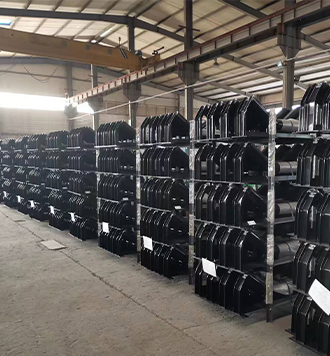 Afrikaans
Afrikaans  Albanian
Albanian  Amharic
Amharic  Arabic
Arabic  Armenian
Armenian  Azerbaijani
Azerbaijani  Basque
Basque  Belarusian
Belarusian  Bengali
Bengali  Bosnian
Bosnian  Bulgarian
Bulgarian  Catalan
Catalan  Cebuano
Cebuano  Corsican
Corsican  Croatian
Croatian  Czech
Czech  Danish
Danish  Dutch
Dutch  English
English  Esperanto
Esperanto  Estonian
Estonian  Finnish
Finnish  French
French  Frisian
Frisian  Galician
Galician  Georgian
Georgian  German
German  Greek
Greek  Gujarati
Gujarati  Haitian Creole
Haitian Creole  hausa
hausa  hawaiian
hawaiian  Hebrew
Hebrew  Hindi
Hindi  Miao
Miao  Hungarian
Hungarian  Icelandic
Icelandic  igbo
igbo  Indonesian
Indonesian  irish
irish  Italian
Italian  Japanese
Japanese  Javanese
Javanese  Kannada
Kannada  kazakh
kazakh  Khmer
Khmer  Rwandese
Rwandese  Korean
Korean  Kurdish
Kurdish  Kyrgyz
Kyrgyz  Lao
Lao  Latin
Latin  Latvian
Latvian  Lithuanian
Lithuanian  Luxembourgish
Luxembourgish  Macedonian
Macedonian  Malgashi
Malgashi  Malay
Malay  Malayalam
Malayalam  Maltese
Maltese  Maori
Maori  Marathi
Marathi  Mongolian
Mongolian  Myanmar
Myanmar  Nepali
Nepali  Norwegian
Norwegian  Norwegian
Norwegian  Occitan
Occitan  Pashto
Pashto  Persian
Persian  Polish
Polish  Portuguese
Portuguese  Punjabi
Punjabi  Romanian
Romanian  Russian
Russian  Samoan
Samoan  Scottish Gaelic
Scottish Gaelic  Serbian
Serbian  Sesotho
Sesotho  Shona
Shona  Sindhi
Sindhi  Sinhala
Sinhala  Slovak
Slovak  Slovenian
Slovenian  Somali
Somali  Spanish
Spanish  Sundanese
Sundanese  Swahili
Swahili  Swedish
Swedish  Tagalog
Tagalog  Tajik
Tajik  Tamil
Tamil  Tatar
Tatar  Telugu
Telugu  Thai
Thai  Turkish
Turkish  Turkmen
Turkmen  Ukrainian
Ukrainian  Urdu
Urdu  Uighur
Uighur  Uzbek
Uzbek  Vietnamese
Vietnamese  Welsh
Welsh  Bantu
Bantu  Yiddish
Yiddish  Yoruba
Yoruba  Zulu
Zulu Optimal Conveyor Roller Idler Solutions for Efficient Material Handling Systems
The Essential Role of Conveyor Roller Idlers in Material Handling Systems
In the world of material handling, efficiency and reliability are paramount. Whether it's in warehouses, manufacturing plants, or distribution centers, the movement of materials is a critical process that can significantly impact overall productivity. One crucial component in this process is the conveyor roller idler, which plays an essential role in the smooth operation of conveyor systems.
Understanding Conveyor Roller Idlers
Conveyor roller idlers are cylindrical rollers that serve as support structures for conveyor belts. They are strategically placed along the length of a conveyor system, particularly beneath the conveyor belt, to provide stability and reduce friction. This component is integral in ensuring that materials are transferred seamlessly from one point to another, minimizing wear and tear on both the conveyor belt and the materials being transported.
Types of Conveyor Roller Idlers
There are several types of conveyor roller idlers, each designed for specific functions and material handling needs. The most common types include
1. Impact Idlers These are placed at loading zones to absorb the impact of materials being loaded onto the conveyor belt, reducing the risk of damage to both the belt and the idler itself. 2. Return Idlers Located on the underside of the conveyor system, return idlers help support the belt as it returns to the loading point, ensuring continuous operation.
3. Training Idlers Used to align the conveyor belt properly, training idlers prevent lateral movement and ensure that the materials remain on the belt throughout the transportation process.
4. Guide Rollers These support the belt edges and help in tracking, ensuring that the materials stay aligned during transport.
Benefits of Using Conveyor Roller Idlers
Utilizing high-quality conveyor roller idlers comes with a myriad of benefits, including
- Reduced Wear and Tear By providing support and reducing friction, idlers help in minimizing wear on the conveyor belt and components, extending the lifespan of the entire system.
conveyor roller idler

- Increased Efficiency With the proper alignment and support, materials move more smoothly and quickly along the conveyor system, enhancing overall operational efficiency.
- Energy Savings Reducing resistance and friction can lead to lower energy consumption, making the entire material handling process more cost-effective.
- Maintenance Reduction Quality idlers require less frequent maintenance compared to lower-grade alternatives, resulting in less downtime and improved operational productivity.
Choosing the Right Conveyor Roller Idlers
When selecting conveyor roller idlers, it's essential to consider several factors to ensure optimal performance
1. Load Capacity Idlers must be chosen based on the weight of the materials they will support. Selecting idlers with an appropriately rated load capacity is crucial to prevent premature failure.
2. Material Construction Idlers can be made from various materials, including steel, plastic, and rubber. The choice depends on the environment, the type of materials being handled, and the expected wear conditions.
3. Environmental Conditions The operating conditions, such as temperature, humidity, and exposure to chemicals or debris, should be considered. Idlers designed for harsh environments can significantly improve durability.
4. Maintenance Requirements Consider how easy it is to maintain and replace rollers. Options with sealed bearings or special coatings may require less frequent servicing.
Conclusion
Conveyor roller idlers might seem like a mere mechanical component in the vast machinery of material handling, but they play a vital role in ensuring the efficiency and longevity of conveyor systems. By choosing the right type of idlers and maintaining them properly, businesses can enhance their operational effectiveness, reduce costs, and ensure a steady flow of materials. As industries continue to evolve, the importance of reliable conveyor systems—and their integral components like roller idlers—will only continue to grow, highlighting the need for efficiency and innovation in material handling solutions.
-
Revolutionizing Conveyor Reliability with Advanced Rubber Lagging PulleysNewsJul.22,2025
-
Powering Precision and Durability with Expert Manufacturers of Conveyor ComponentsNewsJul.22,2025
-
Optimizing Conveyor Systems with Advanced Conveyor AccessoriesNewsJul.22,2025
-
Maximize Conveyor Efficiency with Quality Conveyor Idler PulleysNewsJul.22,2025
-
Future-Proof Your Conveyor System with High-Performance Polyurethane RollerNewsJul.22,2025
-
Driving Efficiency Forward with Quality Idlers and RollersNewsJul.22,2025





























